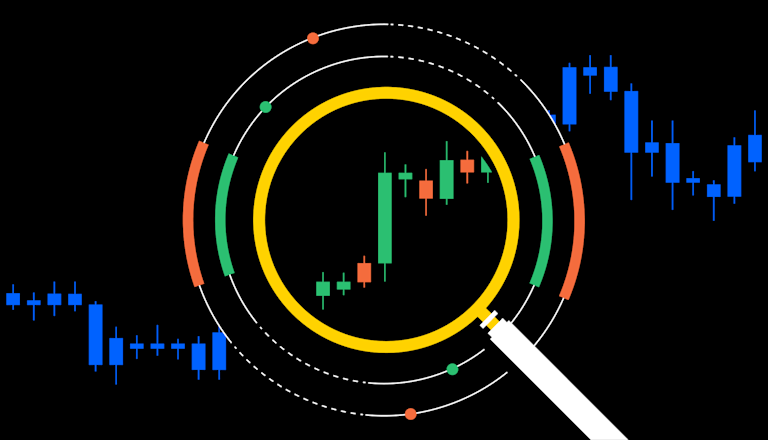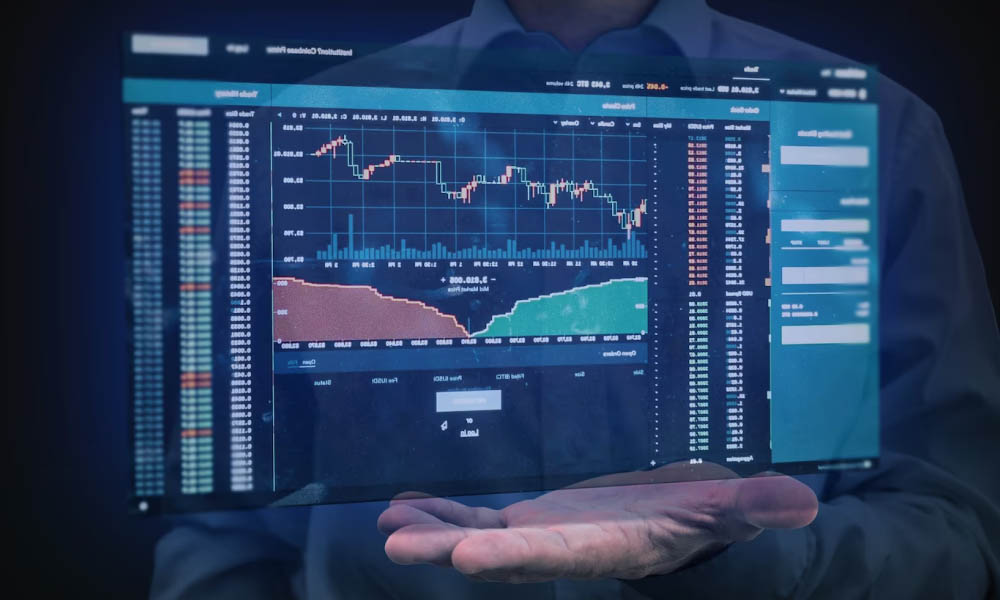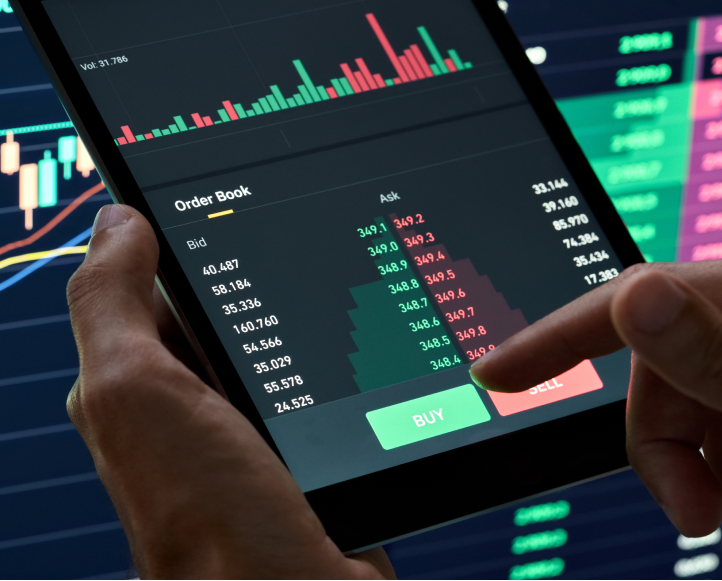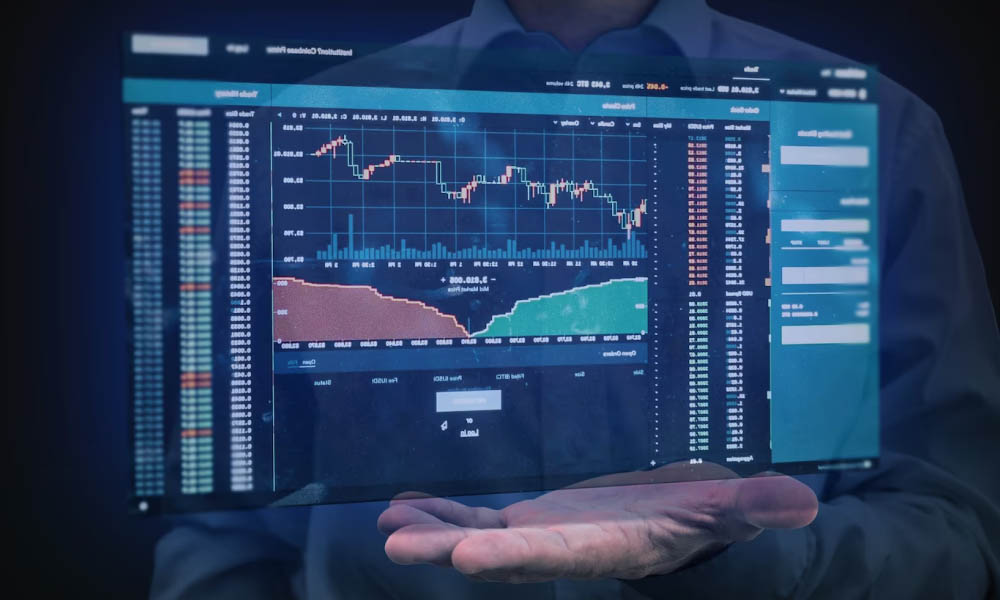Articles de la rubrique "Trading1"
Learn Crypto Trading A Comprehensive Guide

Learn Crypto Trading: Your Ultimate Guide
Pursuing the world of cryptocurrency can be thrilling and confusing, especially for beginners. In this detailed guide, we aim to equip you with the necessary knowledge to learn crypto trading effectively. Understanding the fundamentals, mastering the trading strategies, and implementing the right tools can elevate your trading experience. For more information and insights, consider exploring additional resources like learn crypto trading https://www.stocktitan.net/news/ACEV/ace-convergence-acquisition-corp-reminds-shareholders-to-vote-in-jdfappkeqm49.html.
What is Cryptocurrency Trading?
Cryptocurrency trading involves buying, selling, or exchanging digital currencies in order to make a profit. It can take place on various platforms known as cryptocurrency exchanges, where traders can speculate on the price movements of various cryptocurrencies like Bitcoin, Ethereum, and many others. Understanding the unique features of these digital currencies, along with market analysis, is essential for successful trading.
Basics of Cryptocurrency
The first step to learning crypto trading is understanding what cryptocurrency is. Cryptocurrencies are digital or virtual currencies that use cryptography for security, making them difficult to counterfeit. The most well-known cryptocurrency is Bitcoin, created in 2009. Since then, thousands of alternatives have emerged, each with their own unique attributes and purposes.
Choosing the Right Exchange
To start trading, you’ll need to select an exchange where you can buy, sell, and trade cryptocurrencies. Popular exchanges include Coinbase, Binance, and Kraken. Factors to consider include fees, security measures, user experience, and the variety of currencies available for trading. It’s crucial to choose a reliable exchange with a good reputation to ensure a secure trading environment.
Setting Up a Trading Account
Once you’ve chosen an exchange, the next step is to set up a trading account. This typically includes providing personal information, verifying your identity, and linking a bank account or payment method. Ensure you complete all verification processes as they are integral for security and compliance with regulations.
Understanding Market Analysis

Successful trading relies heavily on market analysis, which can be divided into two main types: fundamental analysis (FA) and technical analysis (TA). Fundamental analysis involves evaluating a cryptocurrency’s underlying value, considering factors like technology, use case, and market demand. Technical analysis, on the other hand, focuses on price charts and trading volumes to predict future price movements. Familiarizing yourself with these approaches can enhance your trading strategies significantly.
Basic Trading Strategies
There are several strategies you can employ when trading cryptocurrencies. Here are a few popular ones:
- Day Trading: This involves making multiple trades throughout the day to capitalize on short-term price fluctuations.
- Swing Trading: Traders hold onto assets for days or weeks to benefit from anticipated price shifts.
- Scalping: This strategy focuses on making small profits from numerous trades, requiring quick decision-making and execution.
- HODLing: A long-term strategy where traders buy and hold cryptocurrencies for an extended period, believing that their value will increase over time.
Risk Management
One of the most critical aspects of trading is managing risk. Setting stop-loss orders can help minimize potential losses by automatically selling a cryptocurrency when it reaches a specific price. Additionally, diversification—spreading investments across various cryptocurrencies—can reduce risk. It’s essential to only invest money that you can afford to lose, as the volatility of the crypto market can lead to significant price swings.
Staying Informed
The cryptocurrency market is continuously evolving, with new developments occurring daily. Staying informed about market trends, regulatory changes, and technological advancements is crucial. Following reputable news sources, joining trading communities, and participating in discussions can help you keep up to date.
Tools and Resources
Utilizing the right tools can enhance your trading experience. Charting software, trading bots, and portfolio trackers are invaluable for traders looking to gain an edge. Additionally, educational resources, such as books, online courses, and webinars, can further deepen your understanding of crypto trading.
Conclusion
Learning crypto trading is a journey that requires dedication, time, and an eagerness to adapt. By understanding the fundamentals, picking the right tools, and effectively managing risks, you can position yourself for success in this exciting market. Remember to start small and gradually expand your trading activities as you gain confidence and experience. Happy trading!
Catégorie: Trading1 | Tags:
Exploring the Future of Algo Crypto Trading

Exploring the Future of Algo Crypto Trading
In the fast-paced world of cryptocurrency, the adoption of algorithmic trading has become a significant trend. Algo crypto trading leverages algorithms to analyze market data and execute trades at speeds unattainable by human traders. As the cryptocurrency market evolves, understanding the fundamentals of algorithmic trading is essential for anyone looking to succeed in this dynamic environment. For more insightful reading on the market, algo crypto trading visit website and glean in-depth knowledge about current trends.
Algorithmic trading operates on multiple strategies that can vary in complexity, from simple mathematical formulas to sophisticated machine learning models. The primary goal is to maximize returns and minimize risks by executing trades based on pre-defined criteria. These algorithms are capable of identifying trading opportunities, monitoring price movements, and executing trades within fractions of a second based on complex calculations.
One of the main advantages of algo crypto trading is its ability to remove emotional biases from trading decisions. Human traders often struggle with emotional reactions to market fluctuations, leading to impulsive decisions that can result in losses. In contrast, algorithms operate solely based on data and predetermined rules, ensuring consistency in trading decisions.
Advantages of Algo Crypto Trading
1. **Speed and Efficiency**: Algorithmic trading can execute multiple trades within milliseconds, allowing traders to capitalize on fleeting market opportunities. This speed is particularly crucial in the volatile cryptocurrency market, where prices can change rapidly.
2. **Backtesting and Simulations**: Traders can backtest their algorithms using historical data to evaluate the effectiveness of their strategies before deploying them in live markets. This practice helps traders refine their approaches and gauge potential profitability.
3. **Diversification**: Algorithms can manage and analyze multiple assets simultaneously, enabling traders to diversify their portfolios without the need for constant monitoring. This strategy further spreads risk and increases the likelihood of capitalizing on multiple trading opportunities.
4. **Improved Accuracy**: Algorithms reduce the chances of human errors associated with manual trading by executing trades based on sound logic rather than intuition. This increased accuracy can result in better long-term performance and profitability.

5. **Reduced Transaction Costs**: Successful algo trading can lead to minimized transaction costs by executing trades at optimal moments and reducing slippage — the difference between the expected price of a trade and the actual price.
Challenges in Algo Crypto Trading
Despite its many advantages, algo crypto trading is not without challenges. Understanding these obstacles is crucial for traders looking to thrive in the market.
1. **Market Manipulation**: The crypto market is often susceptible to manipulation, particularly with lower liquidity assets. Algorithms may react to false signals, potentially leading to costly trades or losses.
2. **Over-Optimization**: Many traders fall into the trap of over-optimizing their algorithms based on historical data. While backtesting is a valuable tool, relying solely on past performance may not accurately predict future outcomes, leading to poor performance when applied in live trading.
3. **System Failures**: Technical glitches or connectivity issues can result in significant losses. A single error in the code can lead to unintended consequences, such as incorrect orders being executed at unfavorable prices.
4. **Regulatory Risks**: The regulatory environment surrounding cryptocurrency is still developing, and algo trading practices could be affected by new regulations. Traders must stay informed about changes in compliance requirements to avoid potential legal issues.
Key Strategies for Successful Algo Crypto Trading
To succeed in algo crypto trading, traders should implement effective strategies tailored to the unique characteristics of the cryptocurrency market. Here are some key approaches:

1. **Trend Following**: This strategy involves identifying the direction of market trends and executing trades that align with the prevailing momentum. Algorithms can be programmed to analyze historical price data to determine entry and exit points based on trend patterns.
2. **Arbitrage**: In a decentralized market like crypto, price discrepancies can occur between different exchanges. Algorithms can exploit these differences by buying low on one exchange and selling high on another, generating profits through arbitrage opportunities.
3. **Market Making**: Market-making algorithms provide liquidity to the market by placing buy and sell orders. This strategy earns profits through the difference between the bid and ask prices, benefiting from frequent small transactions.
4. **Sentiment Analysis**: Analyzing social media and news sentiment can help traders gauge public perception and market sentiment regarding specific cryptocurrencies. Algorithms can be designed to assess sentiment and execute trades based on favorable or unfavorable projections derived from analytics.
5. **Machine Learning Models**: Incorporating machine learning techniques can enhance the predictive capabilities of trading algorithms. These models can adjust to changing market conditions by learning from new data, constantly improving their performance without human intervention.
The Future of Algo Crypto Trading
As technology continues to evolve, the future of algo crypto trading appears bright. The increasing adoption of artificial intelligence and machine learning will influence the development of more advanced trading algorithms. Furthermore, with the expansion of blockchain technology and decentralized finance (DeFi), new opportunities will arise for algo trading across various platforms.
Investors should also consider the integration of robust risk management practices into their trading strategies. By understanding both the advantages and limitations of algorithmic trading, they can approach their investments with caution and clarity.
In conclusion, as the cryptocurrency market continues to mature, algo crypto trading will play an increasingly important role for traders looking to navigate this complex landscape. By leveraging algorithmic trading strategies and embracing technological advances, traders can capitalize on the advantages while managing the inherent risks associated with this fast-evolving market.
Catégorie: Trading1 | Tags:
Essential Crypto Trading Volume Tools for Successful Traders 0

Essential Crypto Trading Volume Tools for Successful Traders
In the dynamic world of cryptocurrency trading, understanding market sentiment is crucial. Crypto Trading Volume Tools click here to delve into the resources that can help you elevate your trading experience. One of the key indicators that traders use to gauge market activity is trading volume. Trading volume refers to the total amount of a specific cryptocurrency that is traded during a given timeframe, and it serves various purposes: confirming trends, indicating liquidity, and signaling possible reversals. This article explores various tools available to track and analyze crypto trading volume effectively.
Understanding Trading Volume
Trading volume within the cryptocurrency markets provides essential insights into the strength of price movements. High trading volume often correlates with the strength of a price trend, whereas low trading volume might suggest a lack of interest or impending reversal. For any trader, understanding how to interpret trading volume is fundamental to making informed trading decisions.
Why Volume Analysis is Important
1. **Confirmation of Trends:** High trading volume can validate that a price movement is legitimate and not merely a result of low liquidity. If the price of Bitcoin surges with significant trading volume, traders can be more confident that the upward price action is backed by a genuine market consensus.
2. **Identifying Reversals:** Conversely, a sharp price move without increased volume might indicate a false breakout, and volume analysis can help in foreseeing potential reversals. Sudden spikes in volume can also hint at important news or events affecting the market.
3. **Liquidity Insights:** High trading volume generally indicates better liquidity, allowing traders to enter and exit positions more smoothly without significant price slippage. Tools that track volume help traders identify cryptocurrencies that are easier to trade.
Essential Tools for Tracking Crypto Trading Volume
Now that we understand the importance of trading volume, let’s discuss the tools that can help traders effectively track and analyze this vital metric.
1. TradingView
TradingView is one of the most popular platforms for traders worldwide, offering a wide range of features, including customizable charts and technical indicators. Within TradingView, you can add volume indicators directly to your charts, allowing for visual analysis relative to price movements. The platform also has a vibrant community, offering scripts and strategies shared by other traders.
2. CoinMarketCap
CoinMarketCap is well-known for providing cryptocurrency market cap data, but it also offers comprehensive trading volume indicators. Users can easily track the trading volume of various cryptocurrencies over different time frames, which can aid in comparative analysis. Additionally, CoinMarketCap lists exchanges along with their respective volume, allowing traders to identify where most crypto activity is happening.
3. CryptoCompare
CryptoCompare provides robust tools for tracking historical and live trading volume data. Their intuitive interface allows traders to analyze volume trends over different periods and compare them against price movements. This platform further adds value by offering a plethora of cryptocurrency pairs, making it easier for traders to find relevant data.

4. Glassnode
For those focused on on-chain analysis, Glassnode offers advanced insights regarding trading volume alongside various other metrics. They provide analytics on exchange inflows and outflows, which can help traders gauge market sentiment, especially during pivotal market events. Their detailed charts can highlight trends in cumulative trading volume over time, aiding long-term strategic planning.
5. CoinGecko
CoinGecko is another excellent tool, offering an extensive catalog of cryptocurrencies, along with vital statistics, including trading volume across various exchanges. Its user-friendly interface allows for easy navigation and quick access to market data. Additionally, CoinGecko provides insights into price momentum, which can be correlated with trading volume for better forecasting.
Integrating Volume Analysis into Your Trading Strategy
Incorporating trading volume analysis into your trading strategy will require consistent practice and a solid understanding of its implications. Here are some tips:
1. **Use Volume Alongside Other Indicators:** Volume should not be the sole indicator in your analysis. Combining it with price action, trend lines, and other technical indicators increases your chances of making accurate predictions.
2. **Pay Attention to Volume Patterns:** Look for consistent patterns, such as increasing volume during uptrends and decreasing volume during downtrends. Recognition of these patterns can provide insights that strengthen your trading decisions.
3. **Set Alerts for Volume Spikes:** Many trading platforms allow you to set alerts for significant volume changes. This can help you react quickly to market movements and capitalize on potential trading opportunities.
Common Mistakes to Avoid
While trading volume can be a powerful tool, there are common mistakes that traders should be wary of:
1. **Over-Reaction to Volume Changes:** High volume does not always equate to a price movement direction. Reacting too quickly to sudden volume spikes can lead to unnecessary trading activity.
2. **Ignoring Market Context:** Volume analysis should take the larger market conditions into account. Understanding events affecting the entire market will provide better insights into volume’s relevance.
3. **Focusing Solely on Volume Indicators:** While volume indicators are helpful, traders should also be attuned to news, market sentiment, and technical analysis to formulate a comprehensive view of market conditions.
Conclusion
Crypto trading volume tools are indispensable for traders looking to enhance their trading strategies and decision-making processes. By utilizing platforms like TradingView, CoinMarketCap, CryptoCompare, Glassnode, and CoinGecko, you can gain important insights into market dynamics. Always remember to incorporate volume analysis with other trading strategies for a more holistic approach. With the right tools and practices, you’ll find yourself better equipped to navigate the volatile world of cryptocurrency trading.
Catégorie: Trading1 | Tags:
Understanding Crypto Arbitrage Trading Strategies, Risks, and Opportunities

Understanding Crypto Arbitrage Trading
Crypto arbitrage trading offers unique opportunities for traders to capitalize on price discrepancies across various platforms. Many investors are drawn to this approach due to its potential for profitability. Crypto Arbitrage Trading click here to learn more about essential trading strategies. But what exactly is crypto arbitrage trading, how does it work, and what should traders be aware of? In this article, we will delve into the fundamentals of crypto arbitrage trading, exploring its various types, methods, risks, and tips for success.
What is Crypto Arbitrage Trading?
At its core, crypto arbitrage trading involves taking advantage of price differences of the same asset across different exchanges. Traders buy a cryptocurrency at a lower price from one exchange and sell it at a higher price on another, thus profiting from the gap. This phenomenon occurs due to variations in supply and demand, trading volumes, and changes in market sentiment among exchanges. By understanding these market dynamics, traders can create profitable strategies and optimize their trading outcomes.
Types of Crypto Arbitrage
There are several types of arbitrage strategies that traders can employ in the cryptocurrency market. Here are the most common ones:
1. Spatial Arbitrage
This is the most straightforward form of arbitrage trading, where a trader identifies a price difference for the same cryptocurrency on different exchanges. For example, if Bitcoin is priced at $40,000 on Exchange A and $40,500 on Exchange B, a trader could buy Bitcoin from Exchange A and immediately sell it on Exchange B to earn a profit. While this method can be highly effective, it requires quick execution and awareness of transaction fees, which can affect overall profit.
2. Statistical Arbitrage
This approach involves using mathematical models to predict future price movements based on historical data. Traders often employ sophisticated algorithms to identify a correlation between different cryptocurrencies or market conditions. The idea is to capitalize on short-term inefficiencies in the market by identifying when an asset is mispriced compared to its historical norm. Statistical arbitrage can involve trading pairs, such as trading Bitcoin against Ethereum, to take advantage of relative price movements.
3. Triangular Arbitrage
Triangular arbitrage involves three currencies and takes place within the same exchange. Traders exchange one currency for another and then convert it back to the original currency, profiting from any discrepancies in exchange rates. This strategy requires knowledge of forex markets and understanding how to navigate complexities involving multiple currency pairs.
4. Exchange Arbitrage
Exchange arbitrage is related to spatial arbitrage but focuses specifically on taking advantage of pricing differences across different trading platforms. This often necessitates users to have accounts on multiple exchanges, as well as an understanding of withdrawal and deposit times, as delays can diminish potential profits.
Risks of Crypto Arbitrage Trading
While crypto arbitrage presents lucrative opportunities, it is not without risks. Here are some key risks traders should consider:
1. Market Volatility
The cryptocurrency market is known for its extreme volatility. Price discrepancies can close rapidly, making it critical for traders to act quickly. A buyer may find that the price difference they relied on has vanished by the time they execute a trade, resulting in losses.

2. Transaction Fees
Every transaction typically incurs fees, which can significantly eat into profits from arbitrage opportunities. Traders must be diligent in assessing whether the potential profit surpasses the transaction fees associated with buying and selling cryptocurrencies across different exchanges.
3. Exchange Limitations
Different exchanges have varying withdrawal limits and processing times, which can hinder a trader’s ability to execute a profitable arbitrage trade before the price discrepancy is resolved. It is essential to be familiar with the terms and limitations of the exchanges being used.
4. Regulatory Risks
Regulatory environments for cryptocurrency trading vary widely across jurisdictions and can change unexpectedly. Traders must stay informed about regulatory developments that could impact their trading activities, particularly for arbitrage operations that span multiple exchanges and countries.
Tips for Successful Crypto Arbitrage Trading
To maximize the potential for profit in crypto arbitrage trading, consider the following tips:
1. Stay Informed
Keeping up with market news, trends, and technical advancements can provide valuable insights into potential arbitrage opportunities. Tools like price alerts can help you identify favorable conditions.
2. Use Automated Trading Bots
Automated trading bots can execute trades quickly based on predefined criteria, which is particularly useful in rapidly moving markets like cryptocurrency. These bots can analyze multiple exchanges simultaneously and execute trades almost instantaneously.
3. Diversify Your Trading Portfolio
Diversifying investments across various cryptocurrencies and exchanges can reduce risk exposure. It’s vital to have various strategies and cryptocurrencies to navigate different market conditions.
4. Monitor Fees Closely
Always factor in trading fees when evaluating potential arbitrage opportunities. Make sure that the price difference clearly outweighs any associated costs.
Conclusion
Crypto arbitrage trading can be an exciting and profitable venture, offering unique opportunities in the bustling world of cryptocurrency. However, it is crucial for traders to remain vigilant about the risks and develop a comprehensive understanding of each trading strategy. By leveraging market inefficiencies and employing the right tools, traders can effectively capitalize on price discrepancies across platforms, turning opportunities into successful trades.
Catégorie: Trading1 | Tags:

 Service commercial : 01 80 88 43 02
Service commercial : 01 80 88 43 02